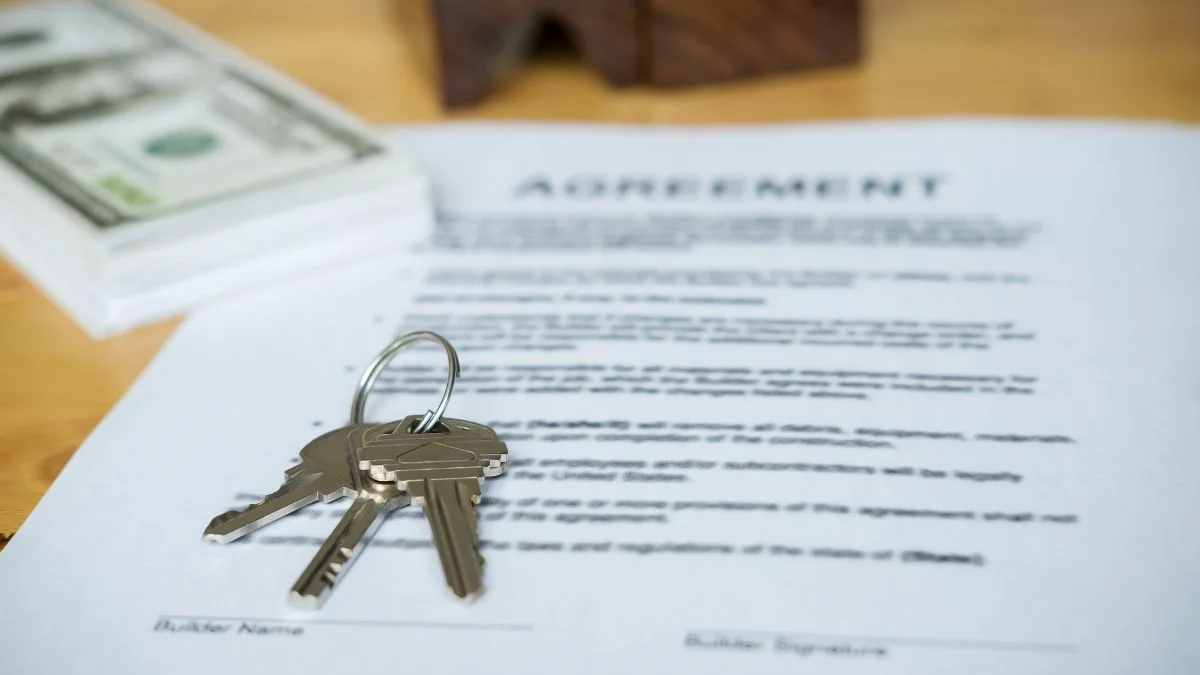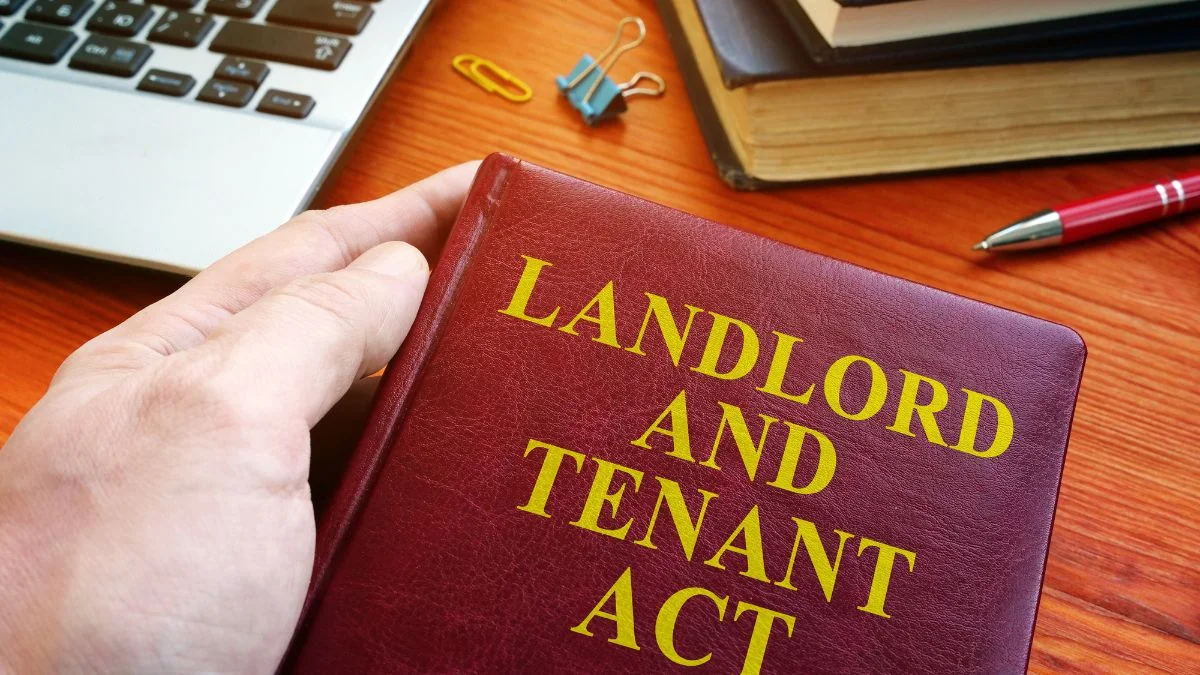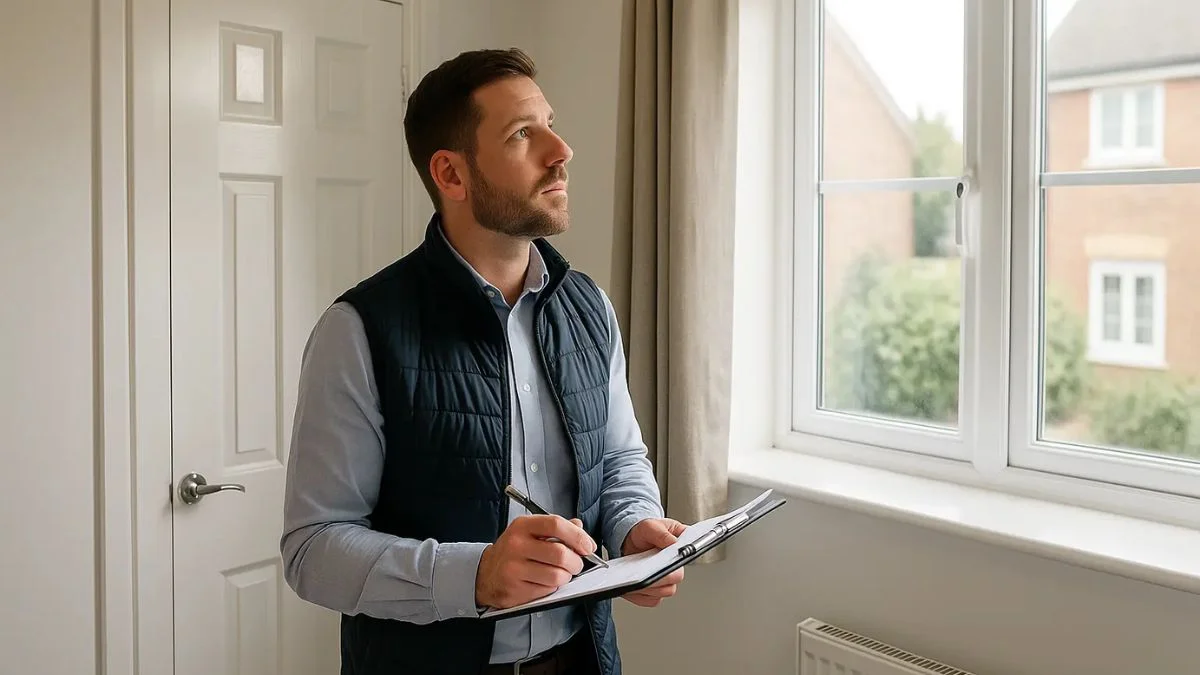Renting out a room in a home can be an effective way to earn extra income, but it also requires clear legal documentation. A lease agreement for renting a room the rights and responsibilities of both landlord and tenant, ensuring that expectations are properly set.
In this guide, we'll explain what a room lease agreement is, why it matters, and how to create one using a simple and free template.
What Is a Lease Agreement for Renting a Room?

A lease agreement for renting a room is a legally binding contract between a landlord and a tenant who occupies a specific room within a property. It grants the tenant the right to use one private room, often in a shared house or apartment while outlining access to common spaces such as the kitchen, living room, or bathroom. Unlike a full-property lease, this document focuses on the tenant’s exclusive room and clarifies how shared areas are used.
If you’re planning to rent out a room for extra income, it’s important to understand the legal process and responsibilities involved. You can check out this detailed guide on how to rent out a room in your house for practical steps and landlord tips.
Many property owners wonder, "Can you write your own lease agreement?" Yes, absolutely, but it needs to be comprehensive and comply with local and state laws. To simplify the process, using a room rental agreement template free for download is highly recommended. Starting from a simple room rental agreement template ensures that all essential legal elements are included and reduces the risk of missing important clauses.
So, what should be included in a lease agreement for renting a room? Here are the fundamental sections every landlord should cover:
- Tenant and Landlord Information
- Property and Room Description
- Lease Term
- Rent and Payment Terms
- Security Deposit
- Utilities and Services
- House Rules
- Maintenance and Repairs
- Legal and Compliance Clauses
- Signatures and date
Why Landlords Need a Room Lease Agreement?

Having a written tenancy agreement renting a room is more than good practice. It's legal protection. Verbal agreements may be misunderstood, and informal arrangements often cause disputes.
Below are key reasons every landlord should prepare a detailed room lease contract.
Legal protection for both parties
A written lease for renting a room in my house clearly outlines obligations and rights. It defines the property owner's rights, such as collecting rent and enforcing house rules, and the tenant’s rights, such as a habitable living space.
This legal clarity is vital if disputes arise. Without a formal lease for renting a room in my house, property owners have little recourse in court for issues like non-payment or property damage.
Clarity on rules, responsibilities, and payments
The agreement specifies who pays for utilities, what areas are shared, and when rent is due. Clear terms reduce confusion about late fees, cleaning duties, or guest policies, issues that often lead to conflict in shared housing.
Preventing disputes by putting everything in writing
Most landlord-tenant conflicts arise from misunderstandings, not malice. Defining every detail upfront from quiet hours to cleaning schedules, helps prevent arguments down the road. Property owners should ensure the tenancy agreement renting a room covers all anticipated shared living issues.
Key Elements to Include in a Room Lease Agreement

A good sample lease agreement for room rental should be thorough. Here is what to include in a room rental agreement to ensure it's legally sound and covers all eventualities.
1. Tenant and Landlord Information
Every room rental agreement begins with basic identification details. Include:
- Full legal names
- Contact information
- Identification numbers for both the landlord and the tenant
This prevents confusion, especially in multi-tenant properties where several renters share common spaces. Some landlords also include emergency contact details for safety purposes.
2. Property and Room Description
Clearly describe the property’s full address and the exact room being leased.
For example: “Room 2, second floor, includes private bathroom and shared access to kitchen and laundry.” Mention any shared facilities: garage, backyard, or storage to avoid misunderstandings later.
For landlords renting a room in a private home, this clarity is especially important to define which areas are private versus shared.
3. Lease Term
The lease term specifies how long the tenant can occupy the room. Define clearly state the start and end dates, whether it’s a fixed-term (e.g., 12 months) or month-to-month arrangement. Month-to-month leases offer more flexibility for both sides.
For more information about this type of rental period, check what is a month-to-month lease. Also, include renewal terms and notice periods for ending or extending the lease.
4. Rent and Payment Terms
Specify the exact rent amount, the due date (e.g., the 1st of the month), and accepted payment methods, for example, direct bank transfer, online payment platforms, or check. Many landlords now prefer digital payments for efficiency and record-keeping. If late fees apply, specify the grace period and penalty percentage.
To simplify rent collection and avoid missed payments, refer to the best way to collect rent for modern, secure options.
5. Security Deposit
A security deposit provides financial protection in case of damage or unpaid rent. The agreement should specify the deposit amount, how it’s stored (in a separate escrow or trust account), and the timeline for return after the lease ends.
Under most U.S. state laws, landlords must return the deposit within 14 to 30 days after move-out, minus any approved deductions. Include clear conditions for deductions, such as repairs beyond normal wear and tear to avoid disputes.
6. Utilities and Services
One of the most common sources of disagreement is utility costs. A clear room share rental agreement should explain which utilities: electricity, water, gas, internet, are included in rent and which are divided among tenants. For shared properties, consider adding a utility-splitting clause specifying how each tenant contributes.
This prevents misunderstandings about bills and encourages responsible usage.
7. House Rules
House rules create a respectful living environment. Outline expectations for noise, cleanliness, guest visits, smoking, and pet policies. These details are especially important in shared homes or rooming houses where multiple tenants interact daily.
Landlords renting out part of their private residence should also clarify visitor hours, parking arrangements, and use of shared spaces like kitchens or patios. Having these written ensures harmony and consistency for everyone.
8. Maintenance and Repairs
Maintenance clauses determine who handles repairs and upkeep. Typically, tenants handle small issues like lightbulb replacement or minor cleaning, while landlords take care of structural or system-related repairs (e.g., plumbing, HVAC).
Encourage tenants to report issues promptly to prevent larger damage. Landlords can also specify how maintenance requests should be submitted by text, email, or through a management platform.
For more insights on landlord costs and responsibilities, see property management cost.
9. Legal and Compliance Clauses
Every tenancy agreement renting a room must comply with local housing regulations, fire safety codes, and anti-discrimination laws such as the Fair Housing Act (FHA). Include clauses covering eviction procedures, subletting rules, and how legal notices are delivered.
If updates or rule changes occur during the tenancy, landlords can issue a lease addendum instead of rewriting the entire contract.
How to Create a Lease Agreement for Renting a Room?

Property owners don't need to be lawyers to draft a strong contract. Knowing how to write a lease agreement for a room is a manageable process. Here’s how to do it.
Step 1: Use a template
Begin with a simple room rental agreement template or room for rent contract template. These templates include all essential sections: tenant details, payment terms, and maintenance clauses, designed to meet most U.S. state requirements.
If the property is in a city with rental ordinances (like Los Angeles or New York), landlords should verify that the template complies with local housing codes, rent control regulations, or disclosure laws.
Step 2: Customize the terms
Landlords often ask, “Can you write your own lease agreement?”. Yes, it’s entirely legal, provided the document includes all required clauses under local landlord-tenant law. Next, personalize the document to reflect the unique details of the property and living arrangement. Include:
- Property description: Address, room number, and access to shared spaces (kitchen, laundry, backyard).
- Rent details: Monthly rent, due date, and payment methods (cash, check, bank transfer, or digital apps).
- Security deposit: Amount, holding method, and timeline for refund.
- House rules: Smoking policies, guest limits, quiet hours, and pet permissions.
- Furnishings: Specify if the room includes furniture or appliances.
When customizing, make sure every clause is specific, measurable, and fair. It is essential that both parties know what they are signing. We recommend reviewing the essential questions to ask before signing a lease to ensure clarity on every term.
Step 3: Review with the tenant
Before signing, both parties should review every section together. Walk through rent, utilities, maintenance, and house rules in detail. Encourage the tenant to ask questions or suggest revisions for clarity. Transparency at this stage helps prevent misunderstandings, reinforces trust, and promotes long-term tenancy stability.
In addition, landlords with multiple tenants should clarify whether the agreement is joint or individual. Learn more about this at multiple tenants on a lease
Step 4: Sign and distribute copies
Once both sides agree, the lease must be signed and dated. In most U.S. states, digital signatures are legally valid under the Electronic Signatures in Global and National Commerce Act (E-SIGN).
Each party should receive a signed copy either printed or digital for their records. Retaining documentation ensures compliance and simplifies future legal or financial references.
To further protect the agreement, landlords may have signatures notarized (optional) or include witnesses, especially for leases longer than one year.
Here are the sample room rental agreement template that landlords can adapt for their own use:
Tenant Rights Landlords Must Respect

Landlords must comply with federal and state housing laws protecting tenants from unfair treatment. While the specific details may vary by state, most tenants in the U.S. are guaranteed the following core rights:
1. The right to habitability
Landlords must keep the property safe, clean, and livable. This includes working plumbing, heat, and electricity. Under most state habitability laws, rooms must meet basic health and safety codes such as having smoke alarms, proper locks, and no pest issues.
If serious problems are ignored, tenants may have the right to ask for repairs or report the issue to local housing authorities.
2. The right to quiet enjoyment
Tenants have the right to privacy in the rented room. In most U.S. states, a landlord must give at least 24 hours’ notice before entering, unless there’s an emergency like fire or flooding. This rule helps protect tenants from unwanted intrusion.
3. Protection against illegal discrimination
Under the Fair Housing Act (1968), landlords cannot discriminate against tenants or applicants based on race, color, religion, sex, national origin, familial status, or disability. Many states also extend these protections to include factors such as sexual orientation, marital status, or age.
Violating these laws can result in severe penalties, including fines and civil lawsuits. To stay compliant, landlords should avoid discriminatory language in rental listings and treat all applicants equally throughout the leasing process.
4. Right to due process in eviction
Tenants cannot be evicted without legal notice. Most states require written notice and a valid reason such as unpaid rent or breaking the lease. The landlord must file a case in court before asking a tenant to leave.
For example, turning off utilities or changing locks to force a tenant out is known as a “self-help eviction”, which is illegal in every state.
5. Protection from retaliation
It’s against the law to punish tenants for asserting their rights. For example, landlords cannot raise rent or evict someone just because they filed a safety complaint. Many state laws specifically ban retaliatory eviction.
Following these rules keeps landlords compliant and helps maintain a positive rental relationship. For a clearer understanding of tenant types, see tenant vs occupant.
Landlord Responsibilities for Safety and Maintenance

When renting out a room, landlords have legal and moral duties to keep the space safe, livable, and well-maintained. These responsibilities are required under most U.S. state housing laws and local building codes.
1. Keep the property habitable
Landlords must make sure the room and home meet the “implied warranty of habitability.” That means the property must be safe and livable with working plumbing, heating, electricity, and a solid roof and floor.
If serious problems like broken heaters or leaking pipes are ignored, tenants may have the right to hold rent, request repairs, or end the lease under state landlord-tenant laws (for example, California Civil Code §1941.1).
2. Maintain essential systems
The landlord is responsible for repairing and maintaining all major systems, including:
- Electrical wiring and outlets: must be safe and up to code.
- Plumbing and water supply: clean water and proper drainage must be available.
- Heating and cooling: should work properly during the required seasons.
- Structural elements: walls, floors, doors, and windows must be secure and in good condition.
Minor issues such as changing light bulbs may fall under the tenant’s responsibility, but anything structural or safety-related is the landlord’s duty.
3. Ensure safety and security
Landlords must also protect tenants from preventable hazards by:
- Installing and maintaining smoke and carbon monoxide detectors (required in most U.S. states).
- Providing working locks on all doors and windows.
- Keeping hallways, stairs, and common areas well-lit and safe.
- Treating mold, pests, or infestations quickly if they appear.
These steps help prevent accidents and keep the home compliant with local safety codes.
4. Respond to repair requests quickly
When tenants report maintenance issues, landlords should act within a reasonable time frame. Emergency problems like water leaks or power outages should be fixed immediately. Most states allow tenants to use “repair and deduct” remedies if the landlord fails to act, meaning they can pay for the repair and subtract the cost from rent.
5. Follow local laws and inspection rules
Finally, landlords must comply with all local building, fire, and health codes. Some cities require regular property inspections or rental licenses. If the building was constructed before 1978, the landlord must also disclose any lead-based paint hazards under federal law (42 U.S.C. §4852d).
Taxes, Licenses, and Insurance for Renting a Room

Renting part of a property generates taxable income and may require special permits. Landlords should stay informed on local and federal rules.
Rental income reporting on IRS Schedule E
Income earned from a rental agreement room in private home must be reported on IRS Schedule E (Supplemental Income and Loss). Keep detailed records of rent payments and expenses.
Deductible expenses (mortgage interest, property tax, repairs)
Landlords may deduct expenses such as mortgage interest, insurance, repairs, and property taxes from rental income. This can significantly reduce taxable income.
Local permits or rental registrations required by some cities
Some cities, such as Los Angeles or Chicago, require property owners to register as room rental providers. Always check local housing authority websites for current requirements.
Insurance considerations: upgrading to landlord insurance
Standard homeowner policies often exclude tenants. Upgrading to landlord insurance provides liability protection and coverage for potential tenant-related damages.
For a deeper understanding of management costs and profitability, explore how to determine vacancy rate.
Conclusion
A detailed lease agreement for renting a room safeguards both landlord and tenant by defining expectations clearly. Whether managing a shared home or leasing a private suite, having a signed and structured contract ensures smooth cooperation and legal protection.
Landlords can start with a free room rental agreement template, customize it, and finalize it with their tenants. Over time, maintaining written records and following local laws builds a reliable, professional approach to property rental.







